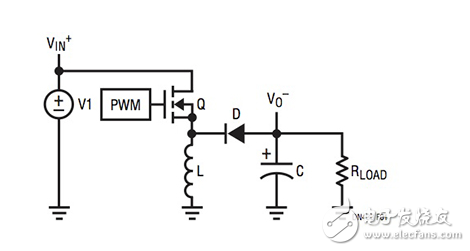
资料下载

使用反相稳压器的降压/升压直流到直流电压转换
使用反相稳压器的降压/升压直流到直流电压转换
降压(降压)开关电压转换器(或稳压器)是受欢迎的电池供电产品,因为它们是有效的电压和负载范围广泛,相对简单。然而,当电池电压低于所需的输出下降,稳压器停止运行。这可能是便携式设计中的一个缺点,因为经常有一些未使用的能力,在电池中留下的电源“辍学”,否则可能已被用来延长运行时间。
针对未使用的电池容量的一个流行的解决方案是降压/升压(“降压/升压”)开关稳压器或其他拓扑结构,如单端初级电感转换器(SEPIC)。(见高新区第“SEPIC选项为电池电源管理”。)这类电源自动切换到升压配置一旦电池输出低于所需的电源输出;但降压/升压设备比较昂贵,电路比较复杂,和电源需要更大的电路板空间。

However, there is a lesser-known option for a switching power supply which maximizes battery capacity in a portable product yet is simple and inexpensive: the switching inverting regulator. These are usually employed to convert a positive input voltage to a (lower) negative output, but can also be used to convert a varying positive input to a lower or higher negative output.
This article describes the function of a switching inverting regulator and its application and then leads on to describe a topology that uses the device to regulate a varying input voltage as an alternative to a conventional buck/boost regulator.
Anatomy of an inverting regulator
Figure 1 shows a simplified schematic of a switching inverting regulator. The regulator comprises a pulse width modulation (PWM) controller driving a metal oxide semiconductor field effect transistor (MOSFET) connected to an inductor. The inductor acts as an energy reservoir providing power when the storage MOSFET switches off.
声明:本文内容及配图由入驻作者撰写或者入驻合作网站授权转载。文章观点仅代表作者本人,不代表电子发烧友网立场。文章及其配图仅供工程师学习之用,如有内容侵权或者其他违规问题,请联系本站处理。 举报投诉
- 相关下载
- 相关文章







